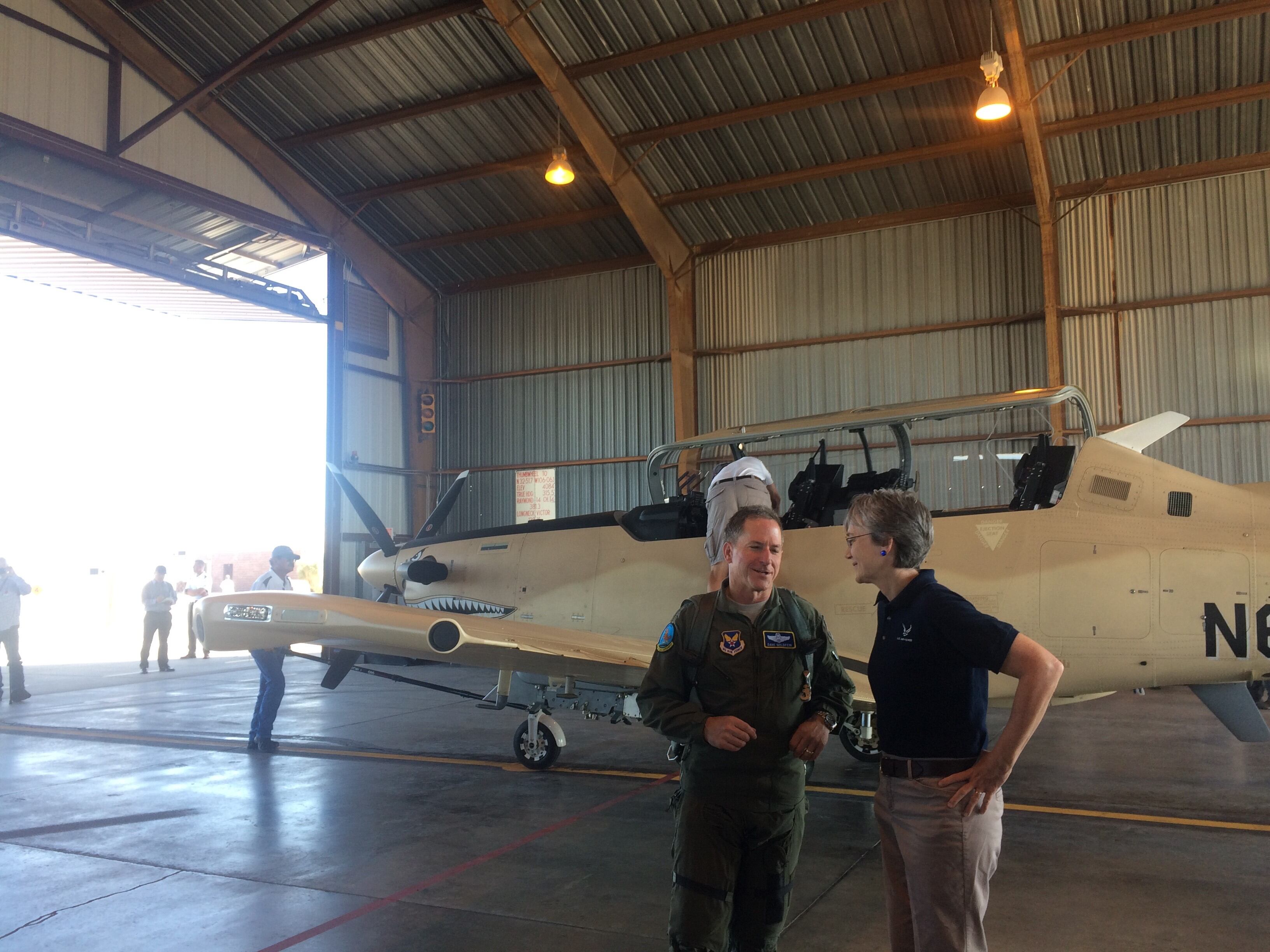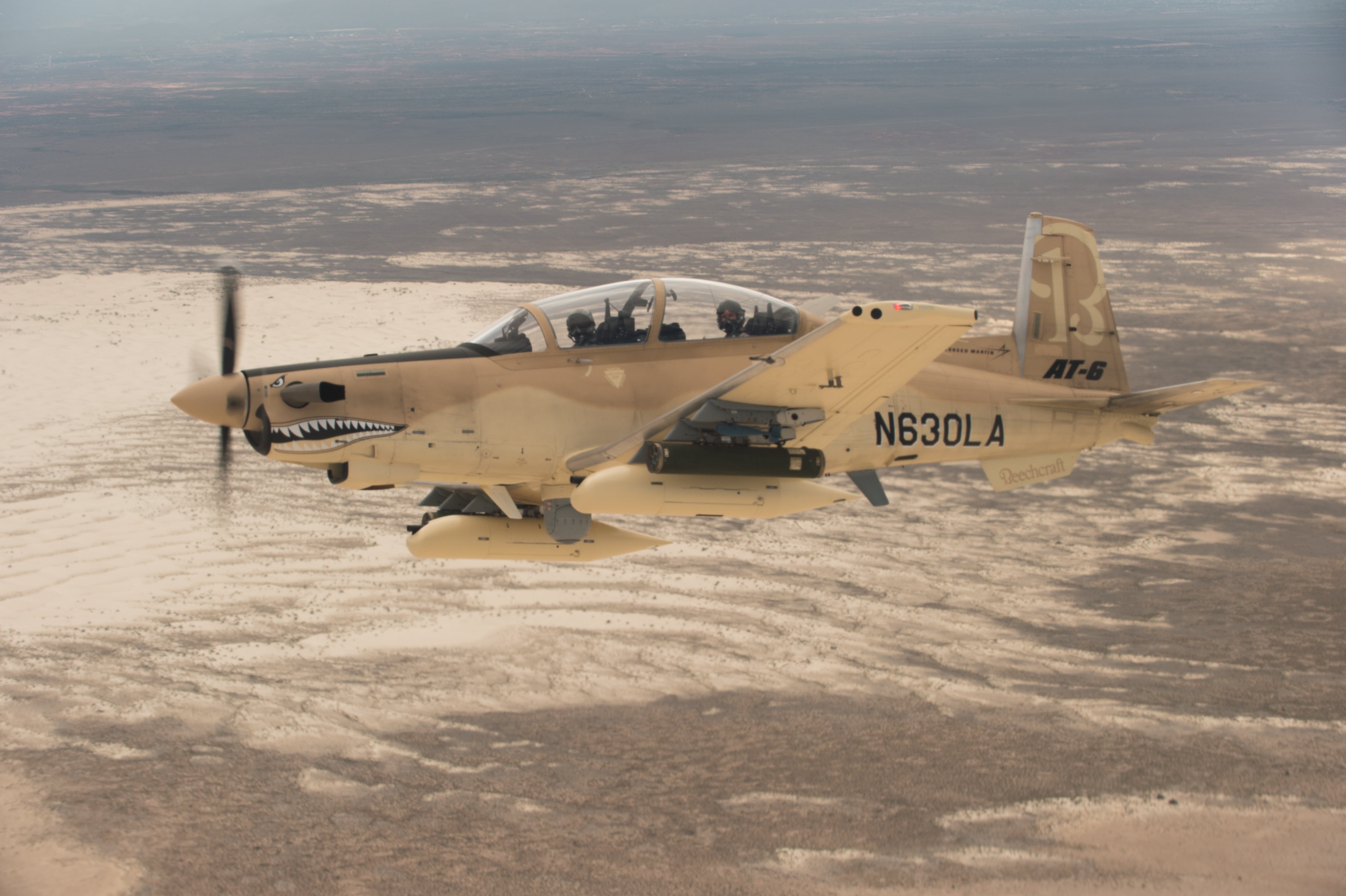DUBAI — The U.S. Air Force hasn’t determined whether it will continue its experiments with light attack aircraft, but that didn’t stop the service’s number-two general from touting the potential benefits in a speech to Middle Eastern and other international air chiefs.
“If non-contested missions continue for some time, and I think that they will, be they COIN [counter insurgency] or other areas, manned light ISR and attack capabilities will be able to fill a void in areas that the fifth gen and UAS don’t provide the best value,” said Gen. Stephen Wilson, the Air Force’s vice chief of staff, in a speech at the Dubai International Air Chiefs conference.“ These light platforms might be able to bring the benefits of lower cost, flexible beddowns, and shorter training times.”
“In turn, it may allow us to build deeper relationships and interoperability across domains and nations,” he added.
The Air Force is testing inexpensive, off-the-shelf light attack planes ahead of a potential procurement, which officials have said would help it more cheaply meet mission requirements in the Middle East and also give it more planes with which to train pilots. The service may know as early as December whether it will take several aircraft to the Middle East for a combat demonstration next year, Wilson said.
Click here for full coverage of the Dubai Air Chiefs Conference and Dubai Airshow.
Air Force Chief of Staff Gen. David Goldfein — an early proponent of the experiment — has repeatedly stated his hope that, should the United States move forward with a light attack plane buy, international partners in the region also consider buying the chosen aircraft.
Lt. Gen. Jeff Harrigian, who heads U.S. Air Force Central Command (AFCENT), told Defense News on Saturday morning that while he hadn’t fielded any questions about the light attack experiment from Middle Eastern air chiefs that morning, countries in the region have expressed interest in what the U.S. Air Force is doing.
“They’d like to understand our perspective on it, the capabilities we believe we would need. And then actually for us, the interoperability we would have with them would be incredibly important to our ability to operate together,” he said.
RELATED

In terms of what he wants to evaluate as the operational commander in the region, Harrigian said he’s looking for persistence, the ability to deliver precision weapons and connectivity to other U.S. air assets and ground troops.
“Those are going to be the keys to success for that platform,” he said.
In August, four aircraft participated in a series of tests at Holloman Air Force Base, N.M., that will help the U.S. Air Force determine whether to push forward with a combat demo in the Middle East in 2018. Those planes were: the A-29 made by Sierra Nevada Corp. and Embraer; the AT-802 Longsword from L3 Technologies and Air Tractor; the Scorpion jet and the AT-6 Wolverine, both from Textron.
AFCENT has already begun thinking about how to execute the experiment and which location would be best to test out the contenders, Harrigian said, although no decision has been reached.
Exactly how the Air Force would fund the combat demo remains an open question. The House and Senate armed service committees have agreed to authorize $400 million for light attack aircraft in fiscal year 2018, but that bill still needs to be passed by Congress. Even if it is passed, however, that legislation would not trigger actual funding — only the appropriations committees can dole out money to the government.
Valerie Insinna is Defense News' air warfare reporter. She previously worked the Navy/congressional beats for Defense Daily, which followed almost three years as a staff writer for National Defense Magazine. Prior to that, she worked as an editorial assistant for the Tokyo Shimbun’s Washington bureau.





